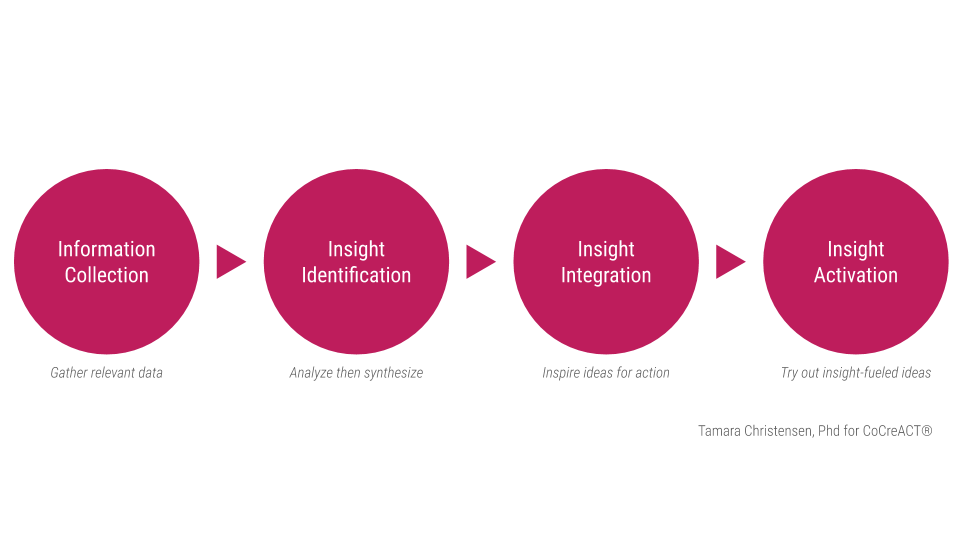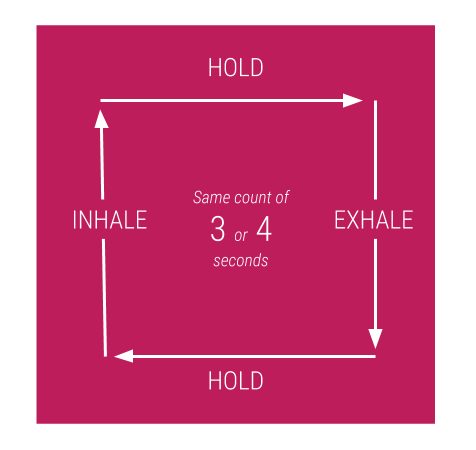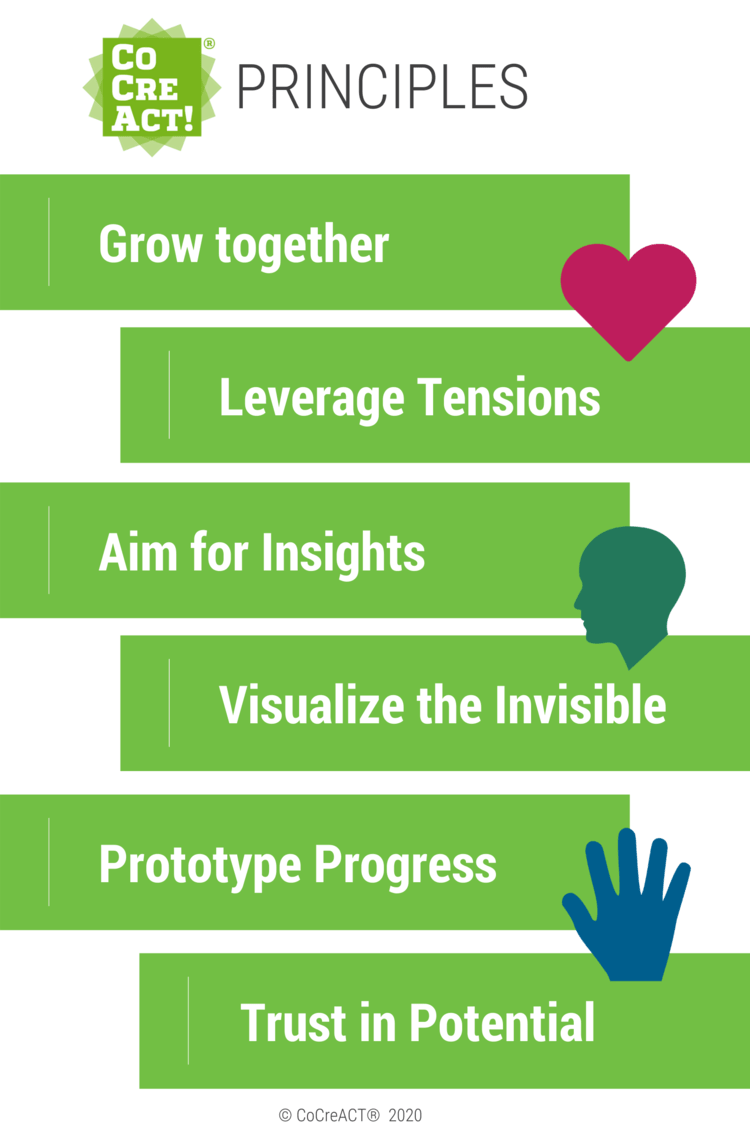Navigating Ambiguity (3/6): Aim for Insights
This is the third of a six-part series about our approach to making the most of ambiguity by embracing six simple principles. You can find the others here.
Ambiguity fosters information overload
We define ambiguity as the uncertainty of possibilities, a context where we face many options yet lack confidence about which to choose. A common way that many of us deal with the discomfort is to seek out new information, a self-soothing behavior that is at our fingertips in this virtual age. Unfortunately, information overload is real. The quantity of data we have access to dwarfs our capacity to process it productively and generate meaningful, quality insights.
Today we can collect an unprecedented amount of information about nearly any topic. A Google search for the word “ambiguity” produces about 97,700,000 results in 0.36 seconds. What on earth is one to do with so many possible resources? Simply choosing the appropriate information from the volume available is often overwhelming for a number of reasons, including:
More channels for finding, storing, sharing information
More history (and accelerating efforts to document everything) means exponentially more information is available
More content of varying quality is now created across industries and countries
More access to information production and sharing means more variation in quality
Less clarity about how to process and curate what is available
Less certainty about authorship, truth and accuracy
Sadly, when it comes to data, more does not always mean better. In fact, more information can lead to “analysis paralysis” and decision fatigue, both of which are shown to have an adverse impact on cognitive functioning and productive decision making. To face ambiguity with confidence, we have to develop the ability to extract what is essential and novel then transform it into something actionable.
Less Information, More insights
You know that pesky challenge you are avoiding? The one that feels confusing, that has many possible outcomes that are hard to predict… Yes, that one. Odds are pretty good that you don’t really need more research and data, you likely have what you need already. Perhaps what you have yet to achieve is insight; the next step of turning information into learning that is inspiring and actionable.
Collecting information in ambiguity is just the beginning because information without action cannot produce knowledge or wisdom. The steps below illustrate a sequence of activities for transforming information into insights. It is helpful to know going into this if your efforts are meant to produce generative (create new ideas) or evaluative (assess existing ideas) insights because this intention will impact the methods you choose and the results you create.
Yes, begin by collecting data. This can be done in various ways including both firsthand experiences (interviewing people, asking questions via survey methods, observations, etc.) and collecting secondary sources (from academic research and corporate-sponsored studies, social media, ratings, self-published articles, etc.). Next, try different approaches to sorting and categorizing the information, look for patterns, themes, and unexpected connections. Craft these learnings into actionable statements or questions that generate new thinking and new ideas. Finally, choose which ideas are worth pursuing (and what you can do to test your assumptions and create even more learning!).
A number of years ago, Tamara consulted with the international footwear company Wolverine Worldwide to help them develop a unique internal Insights process. The organization is committed to building an enduring understanding of their various customers, from hard-working construction workers to hard-playing outdoor enthusiasts and dedicated runners. We took cross-functional teams into peoples’ homes and lives so employees could see, firsthand, how their customers think and feel and make sense of their own worlds. We also used digital ethnography as a virtual tool for peeking into closets and cars and trails. After multiple cities and visits, we would convene the team and facilitate multiple days of sharing stories, images, videos, questions, data analysis, etc. in a sequence that produced deep learnings about the customer and then produced new ideas across the organization for how to better serve those good people.
Ask more beautiful questions
Not sure where to start with collecting information or exploring what you already have? If you are looking for answers, we suggest that you start with beautiful questions! Warren Berger describes a beautiful question as an ambitious yet actionable question that can begin to shift the way we perceive or think about something—and that might serve as a catalyst to bring about change.
These kinds of questions often begin with Why? or What if? or How? (or How Might We…?). Begin with curiosity about ambiguity and make it a priority to keep asking questions that take you deeper into understanding. The goal is not to be “right”, rather the goal is to be informed by diverse, authentic perspectives that advance knowledge and understanding. Be humble. The more you think you know, the further you have to go to really challenge your own assumptions and preferences. Be willing to learn something new that will shift the way you see the world and transform your actions.
Aim for Insights
Finding possibilities in ambiguity is about moving from mess making to meaning making. You can face the discomfort of uncertainty by seeking new ways of thinking, being and doing. Did we say doing? Oh yes, we did! One of the easiest ways to generate insights that you can benefit from is to take action and then reflect on the results. It’s a simple cycle that fosters learning: do, reflect, repeat. And it is something you can undertake at any time, for any situation (be it personal, professional, familial, etc.). Pause, look back, and ask yourself what you actually learned (to do, to not do, to continue, to try, to value, etc.) We geeked about reflection in a previous post so you can learn more there if you are curious...
Speaking of these cycles calls to mind a great activity, called Box Breathing, that we experienced with Jens Hoffmann at the 10th annual play4agile conference. It’s 4 simple steps:
Inhale. Hold. Exhale. Hold. (3 or 4 seconds each, repeat).
Jens asked us to identify which of the 4 steps we liked most. Of course, we all had a preference (give me a nice long exhale any day!). And yet, if we were to only do the step we enjoy most we would probably lose consciousness (or worse). The simple exercise illustrated the importance of moving through the cycles of action (i.e. inhale, exhale) and reflection (the pause in between). Breathing is similar to problem solving, where our actions are divergent and convergent thinking. And hopefully, we make the time in between to reflect and learn.
For what it’s worth, box breathing is also a great technique for calming the nervous system and reducing stress so give it a try!
Aim for Insights means to look beyond what is obvious and prioritize meaning making. You can practice this principle right away. Simply be willing to make the time to pause, be curious about your questions, and be committed to transforming your learnings into actions.
If you’ve missed our introduction about our principles to navigate ambiguity, please continue reading...
WHY PRINCIPLES TO NAVIGATE AMBIGUITY?
Now more than ever we need to adopt new ways of being. We need to find simple and powerful approaches to ambiguity that reveal the possibilities of new worlds. The key pillars of ambiguity activism that we outline in our CoCreACT® approach aim to do precisely that:
CoCreACT® Principles for Navigating Ambiguity
Co - new ways of feeling: We are in this together. Shared purpose gives us strength and direction and connection. Owning our collective uncertainty inspires us to deeper understanding and new perspectives.
Cre - new ways of thinking: In the unknown, our understanding and imagination must have fertile space to grow so that we can co-create new knowledge and solutions. This is only possible when we are able to communicate the ambiguous in experiential ways that foster compassion and creativity.
Act - new ways of doing: Trailblazing does not follow a straight and predetermined path, so we prototype forward. Our progress comes from iterative cycles of experimenting and learning. We can’t evolve through control, but through lifting each other up and being better together than we could ever be alone.
Developing an ambiguity activist mindset requires feeling, thinking, and doing in new ways. To illuminate the path forward, we have developed six essential principles for finding the big possibilities in ambiguity.






